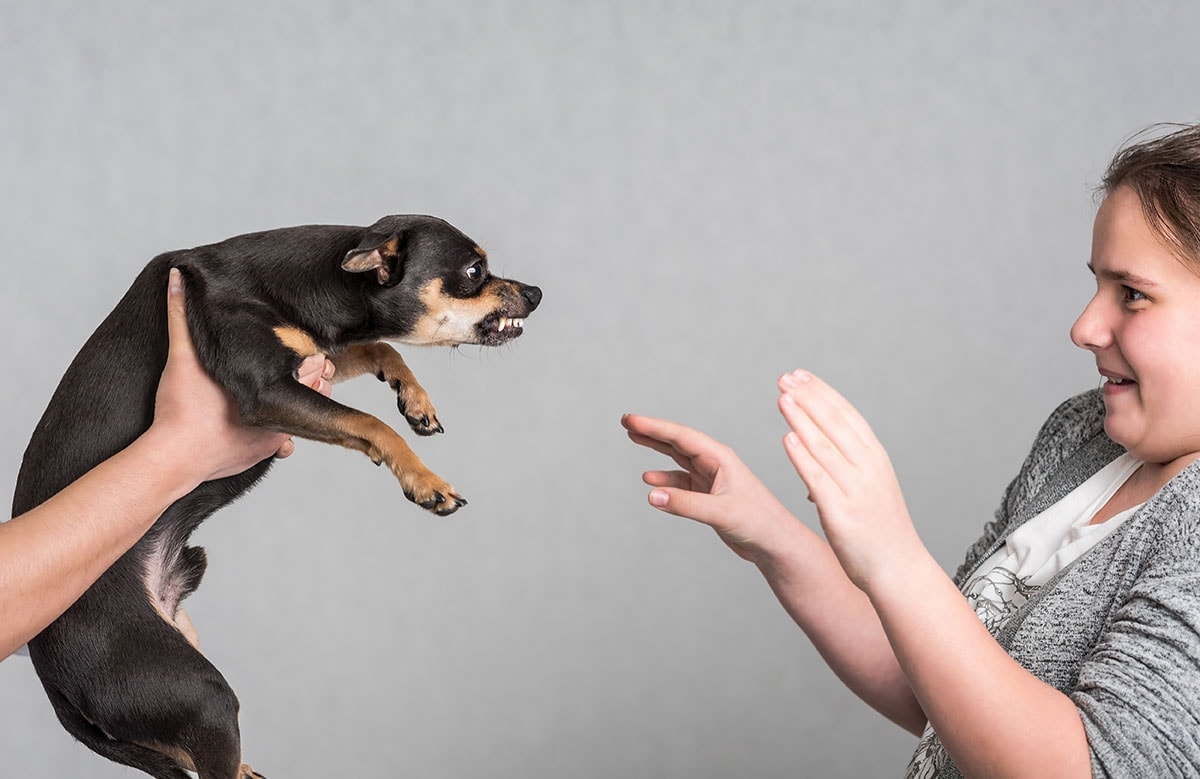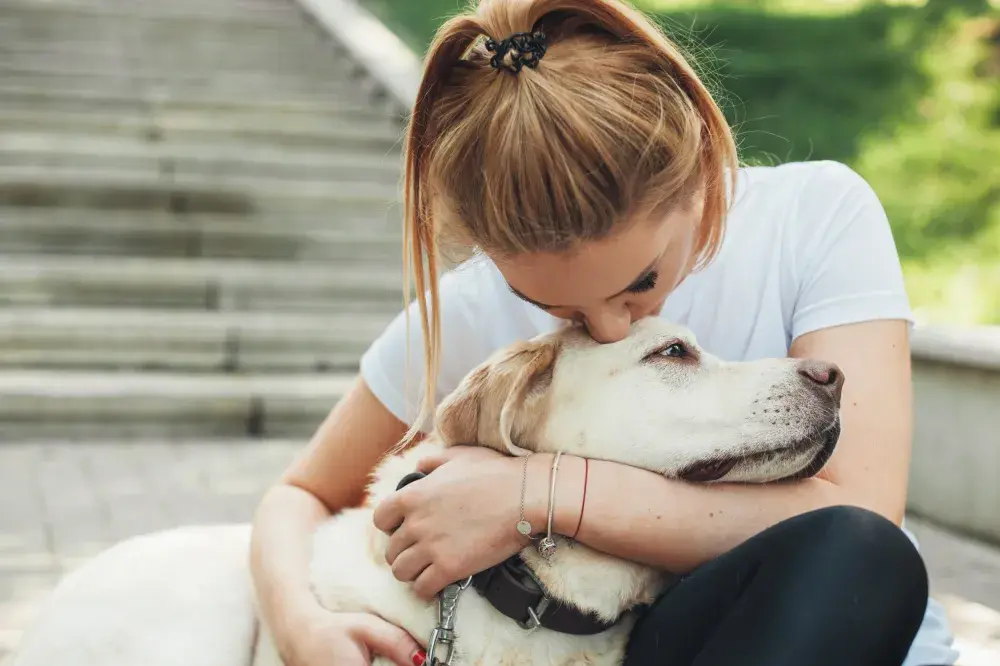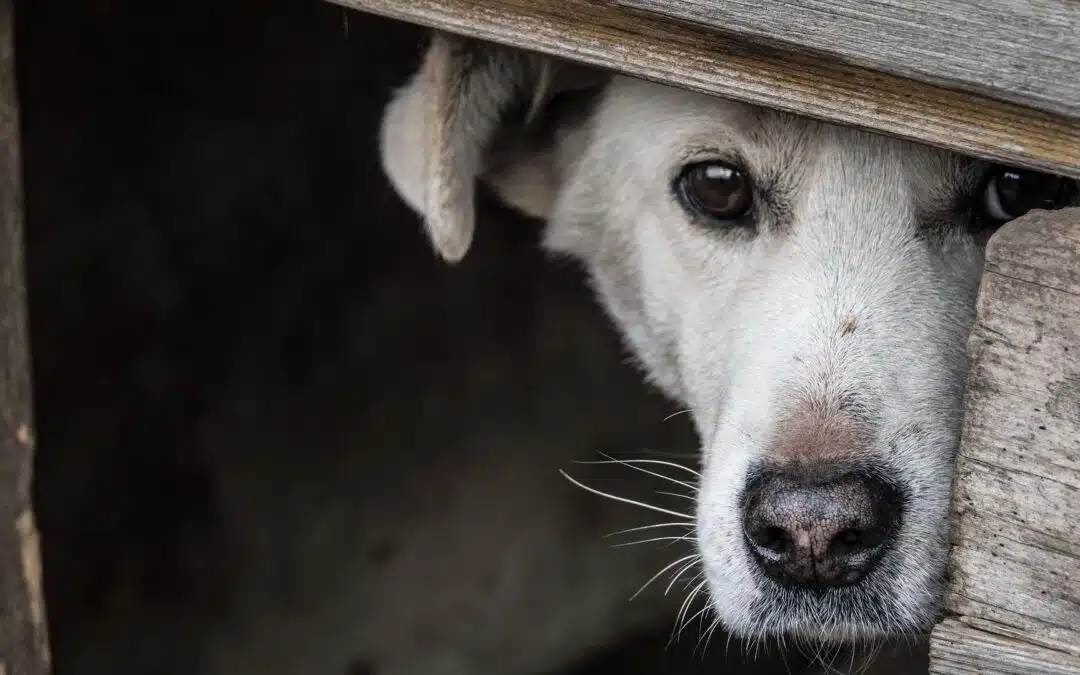I’ve always believed dogs are some of the most loving and loyal companions you can have. But sometimes even the friendliest pup might shy away or seem nervous around certain people. If you’ve ever noticed a dog cowering or avoiding you it’s easy to wonder what’s going on.
Understanding why a dog feels scared is key to building trust and a strong bond. There are several reasons a dog might be wary of you and it’s not always about something you’ve done wrong. By learning what triggers fear in dogs I can help create a safer and more comfortable environment for both of us.
Understanding Canine Fear

Understanding-Canine-Fear
Canine fear often appears as avoidance, trembling, cowering, growling, or barking. I see these behaviors most commonly in unfamiliar contexts or when a dog senses a threat. Triggers for dog fear can involve past trauma, genetics, socialization gaps, or negative association.
I assess the cause by observing body language and identifying specific reactions. For example, flattened ears, tucked tail, lip licking, and yawning indicate stress or anxiety. Staring, freezing, or hiding may accompany these signs when a dog feels overwhelmed.
Noise, abrupt movements, unfamiliar people, or other animals raise the likelihood of canine fear, especially in puppies, abused rescues, or recently adopted adults. I note that each breed and individual responds differently, but certain patterns repeat.
Common Canine Fear Responses
| Behavior | Description | Context Example |
|---|---|---|
| Trembling | Shaking or shivering | During thunderstorms, fireworks |
| Cowering | Lowered body, tail between legs | When approached by strangers |
| Avoidance | Hiding or moving away | In presence of other animals |
| Growling/Barking | Vocalizing defensively | When startled or cornered |
Frequent Causes of Fear in Dogs
| Cause | Example |
|---|---|
| Lack of socialization | Limited exposure as a puppy to varied environments |
| Negative past experiences | Abuse, loud noises, traumatic vet visits |
| Unfamiliar scents/sounds | New home, new people with different perfumes or voices |
| Genetics | Naturally cautious parentage |
I improve bond and reduce fear when I identify and address these sources quickly. Context-rich interpretation of each response helps make my approach more effective and trusted.
Common Reasons a Dog May Be Scared of You
Dogs often show fear in response to specific triggers found in their environment or their interactions with people. I recognize that understanding these triggers helps me address a dog’s fear and shape a more trusting relationship.
Previous Negative Experiences
A dog may show fear if it’s endured trauma, abuse, or punishment from humans in its past. Defensive responses like barking, growling, or cowering can occur when the dog encounters someone resembling its former abuser. According to ASPCA research, over 23% of fearful dogs in shelters have documented histories of mistreatment. I watch for sudden reactions to my presence, especially if I mirror someone from the dog’s past.
Lack of Socialization
Dogs may become fearful if they missed exposure to different people, animals, and settings during their socialization period, usually between 8–16 weeks old. I notice this in dogs that shy away from strangers, children, or specific environments. A study published by the AVSAB notes that around 65% of adult dogs showing persistent fear issues weren’t properly socialized as puppies.
Loud Noises or Sudden Movements
Abrupt sounds or quick movements frequently trigger anxiety in dogs. I observe symptoms including trembling, hiding, or barking after fireworks, thunderstorms, or unexpected gestures. Long-term exposure to overwhelming stimuli can generalize a dog’s fear toward all loud noises or bustling environments.
Body Language and Approach
My posture and body language matter to a dog’s perception of threat. Direct staring, leaning over, or fast movement into a dog’s personal space often triggers their unease. I use calm, non-threatening gestures and avoid looming to prevent fearful responses.
Inconsistent Training or Discipline
Inconsistent signals or harsh punishment undermine a dog’s trust. If sometimes I reward a behavior and other times react negatively without clear cues, the dog grows anxious and fearful. Data from APDT shows that dogs in homes with irregular training display fear-based behaviors 45% more often than those in consistent settings.
Fear-Related Dog Behaviors by Trigger
| Trigger | Common Fear Responses | Estimated Prevalence (%) |
|---|---|---|
| Previous Negative Experiences | Cowering, growling, hiding | 23 |
| Lack of Socialization | Shying away, trembling | 65 |
| Loud Noises/Sudden Movements | Barking, shaking, running | 35* |
| Body Language and Approach | Freezing, retreating, lip-licking | N/A |
| Inconsistent Training/Discipline | Submissive urination, avoidance | 45 |
*National Canine Research Council; *prevalence varies with environment and exposure
These data points and observations help me identify each dog’s fear context, allowing tailored support and better outcomes.
How to Identify Fear in Your Dog

How-to-Identify-Fear-in-Your-Dog
Recognizing fear in your dog starts with observing subtle changes in body language and behavior. Early identification lets me reduce stress and prevent escalation in fearful situations.
Physical Signs of Fear
Physical indicators reveal a dog’s anxiety before it becomes severe. I watch for these key signals:
- Trembling or shivering, especially when facing unfamiliar environments
- Ears held back against the head, showing submission or distress
- Tail tucked tightly between the legs during stressful encounters
- Hunched posture and lowered head when approached
- Hair raised on the neck or back when startled
- Growling or baring teeth, signaling discomfort
- Whining or excessive vocalization even in quiet spaces
- Freezing in place or attempting to move away from triggers
- Yawning or lip licking repeatedly when there’s no food present
- Rapid panting or abrupt cessation of panting in tense situations
Table: Physical Signs of Fear in Dogs
| Physical Sign | Context Example | Source |
|---|---|---|
| Trembling/Shivering | Vet visit, loud noises | [2][4][5] |
| Ears Back | Meeting new people, scolding | [2][4][5] |
| Tail Tucked | Approaching dogs, unfamiliar | [2][4][5] |
| Raised Hair | Stranger entry, loud sounds | [2][4][5] |
| Freezing | Cornered, new environment | [2][4][5] |
Behavioral Changes to Watch For
Changes in daily routines often reflect underlying fear in my dog. These behaviors highlight discomfort:
- Cowering or hiding behind objects or me to seek protection
- Avoidance or repeated escape attempts when confronted with stressors
- Aggressive chewing or biting of furniture, especially when anxious
- Excessive tail chasing following a fearful incident
- Submissive rolling over during confrontational moments
- Housetraining accidents linked to sudden noises or stress
- Sudden irritability or uncharacteristic reactions to routine events
Table: Behavioral Changes Associated With Fear in Dogs
| Behavioral Change | Specific Example | Source |
|---|---|---|
| Hiding/Cowering | Under beds during thunderstorms | [2][5] |
| Avoidance/Escape | Bolting from strangers | [2][5] |
| Aggressive Chewing | Destructive behavior when alone | [2][5] |
| Tail Chasing | Increased frequency after trauma | [2][5] |
| Housetraining Accidents | Accidents after fireworks | [2][5] |
Early recognition of these signs lets me gently support my dog and tailor their environment for improved comfort and confidence.
Steps to Rebuild Trust With a Fearful Dog

Steps-to-Rebuild-Trust-With-a-Fearful-Dog
Building trust with a fearful dog takes time, consistency, and sensitivity. I use specific strategies backed by behavioral science to help dogs overcome anxiety and learn they’re safe with me.
Approach With Patience and Kindness
I move slowly, maintain a relaxed posture, and avoid direct eye contact when approaching a fearful dog. I wait for the dog to come closer on its own terms, rewarding calm behavior with treats and gentle praise. When the dog shows signs of distress like cowering, trembling, or avoidance, I pause further interaction.
Common Fearful Dog Responses and Recommended Actions
| Dog Response | My Action | Example |
|---|---|---|
| Trembling | Remain still, speak softly | Quiet, soothing voice |
| Cowering | Lower myself, avert gaze | Sit on the floor |
| Avoidance | Wait, let dog approach | No forced contact |
Create a Safe Environment
I give the dog access to a quiet, secure area where it can retreat when stressed. I limit exposure to loud noises, strangers, and unpredictable situations. Consistency in daily routines helps reduce anxiety by letting the dog predict what’s next.
Environmental Adjustments to Build Trust
| Adjustment | Impact | Example |
|---|---|---|
| Dedicated hideaway spot | Lowers stress | Crate with favorite blanket |
| Predictable feeding schedule | Builds confidence | Same meal time daily |
| Controlled introductions | Reduces overwhelm | One guest at a time |
These steps let the dog build positive associations, gradually increasing its confidence and trust in me.
When to Seek Professional Help
I seek professional help when a dog’s fear persists, intensifies, or triggers aggressive behaviors. Persistent fear may show as ongoing cowering, growling, trembling, or refusal to approach even after I try positive reinforcement and gentle approaches. Aggressive reactions—like snapping, lunging, or biting—signal a risk to safety for both humans and the dog. If fear disrupts the dog’s daily life, professional assessment becomes crucial.
I consult a veterinarian or certified animal behaviorist for guidance, particularly if:
- Symptoms continue for weeks or recur frequently
- Aggression surfaces or worsens
- Fearful behavior links with medical symptoms, such as appetite loss or self-injury
- My interventions don’t result in gradual improvement
Qualified professionals evaluate for psychological or medical causes and recommend a personalized plan. They may use desensitization, counter-conditioning, or medication, depending on the severity.
Indicators for Professional Help
| Indicator Type | Example Signs (with context) |
|---|---|
| Persistent Fear | Ongoing trembling, avoidance after regular exposure |
| Aggressive Behaviors | Growling, lunging, or snapping after attempts at reassurance |
| Impact on Daily Life | Refusing to eat, hiding for long periods, destructive chewing |
| Unresponsive to Interventions | No progress after trying positive reinforcement |
| Associated Health Issues | Hair loss from over-grooming, significant weight loss |
Roles of Professionals in Fearful Dog Cases
| Professional Type | Key Services Provided | Example Context Scenarios |
|---|---|---|
| Veterinarian | Medical assessment, medication management | Fear with sudden behavioral changes |
| Certified Animal Behaviorist | Behavior modification, training strategies | Aggression or severe avoidance |
| Veterinary Behaviorist | Combined medical-behavioral interventions | Complex fear and health interactions |
Early intervention by professionals increases the chance for a positive, safe outcome when my efforts don’t ease the dog’s fear.
Conclusion
Helping a scared dog feel safe takes time and understanding but the rewards are well worth it. I’ve learned that every dog is unique and their fears deserve patience and respect. By staying observant and compassionate I can create a space where my dog feels secure and valued.
If I ever feel stuck or notice my dog’s fear getting worse I won’t hesitate to reach out to a professional. Building trust is a journey and with the right support my dog and I can move forward together.
Frequently Asked Questions
Why might my dog be scared of certain people or situations?
Dogs can become scared due to past trauma, lack of socialization, genetic factors, or negative associations. Loud noises, sudden movements, or unfamiliar people can also trigger fear. Understanding these triggers helps you address your dog’s needs and build trust.
What are common signs that my dog is afraid?
Common signs of fear in dogs include trembling, cowering, avoidance, flattened ears, tucked tail, growling, or barking. Some dogs may also engage in destructive chewing or hide when feeling threatened or anxious.
How can I help my fearful dog feel more comfortable?
Support your dog by providing a safe environment, approaching gently, and being patient. Let your dog initiate contact, use calm body language, and offer treats for positive behavior. Consistency and kindness are key to building your dog’s confidence.
Why is early socialization important for dogs?
Early socialization helps puppies learn to interact with new people, animals, and environments. Missing this critical window can make dogs more prone to fear and anxiety later in life, so exposing puppies to positive experiences early on is essential.
When should I seek professional help for my dog’s fear?
Seek help if your dog’s fear is ongoing, getting worse, or leading to aggression. Also, consult a professional if your interventions don’t improve your dog’s behavior or if their fear affects daily life. Experts can create personalized treatment plans.
Can a dog’s fear be caused by inconsistent training?
Yes, inconsistent training and discipline can confuse dogs and reinforce fear-based behaviors. Dogs thrive on predictable routines and clear, positive guidelines, which help reduce anxiety and build trust.
What professional support is available for fearful dogs?
Certified animal behaviorists and veterinarians can help. They evaluate your dog’s specific needs, look for medical or psychological causes, and recommend therapies such as desensitization, counter-conditioning, or, in some cases, medication.

